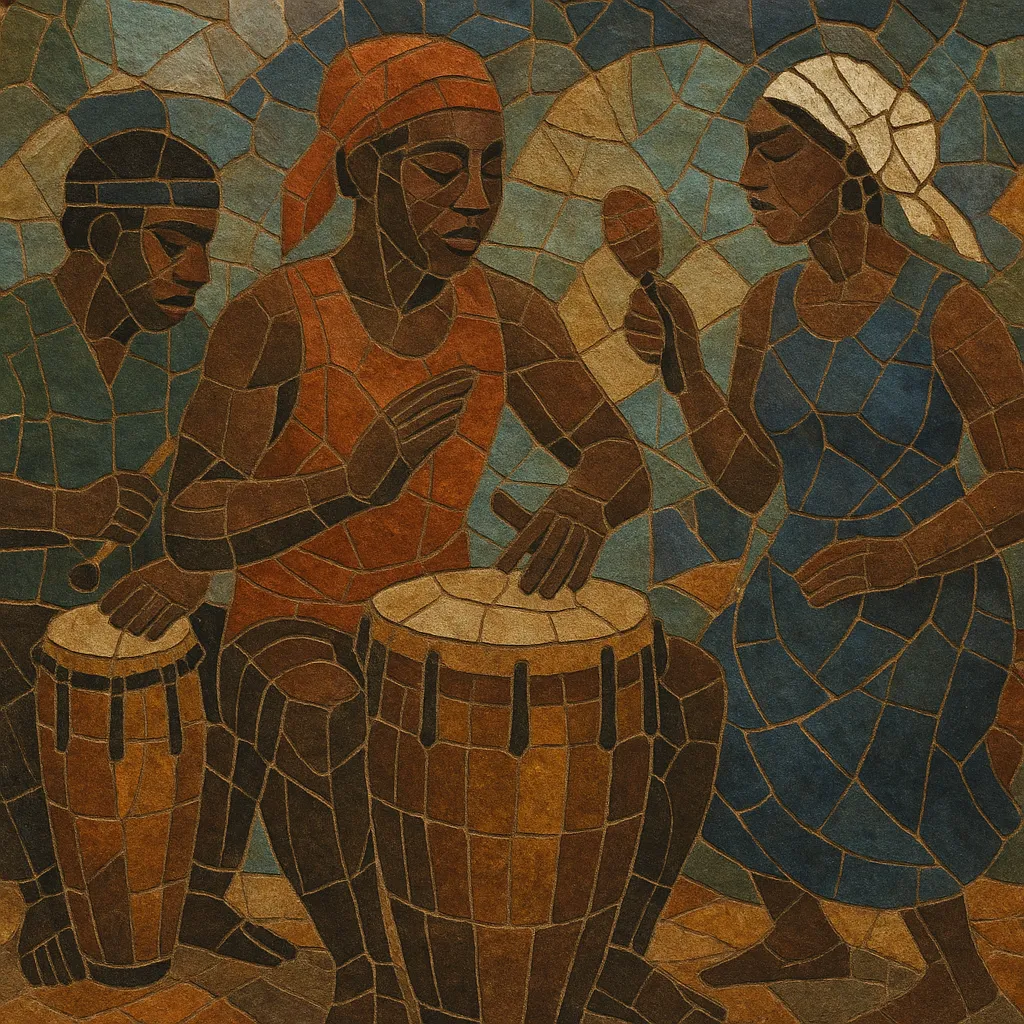Haitian Vodou drumming is the ritual drum tradition of Haiti associated with the Vodou religion. It centers on interlocking polyrhythms played on a three‑drum ensemble (manman, segon, and boula), supported by iron bell (ogan) and rattle (asson/tchatcha), to accompany songs and dances that honor the lwa (spirits).
Its rhythmic suites trace to West and Central African lineages—especially Rada (Fon/Ewe), Nago (Yorùbá), Kongo, and Petwo—preserved and transformed in colonial Saint‑Domingue. Repertoires such as Yanvalou, Nago, Ibo, Kongo, Mahi (Mayi), and Petwo each embody distinct feels, tempi, and dance vocabularies. The master drum (manman) leads, signaling changes and dramatic breaks (kase) that cue dancers, singers, and ritual actions.
Beyond worship, these rhythms have profoundly shaped Haitian popular and roots music and influenced global percussion practice through concert troupes, recordings, and diaspora ensembles.
Enslaved Africans from Fon/Ewe (Dahomey), Yorùbá (Nago), and Kongo nations maintained ceremonial drum practices in colonial Saint‑Domingue (now Haiti). Within Vodou temples (lakou), drumming framed invocations, dance, and spirit possession, with distinct rhythmic families (Rada, Nago, Kongo, Petwo) tied to specific lwa.
Following the Haitian Revolution (1791–1804), Vodou remained central to communal life. Despite periods of suppression, temple lineages preserved instrument building (tanbou with goatskin heads), tuning systems, repertoire names (e.g., Yanvalou, Ibo, Mahi/Mayi), and performance roles (manman lead, segon support, boula ostinato; ogan and asson grounding timelines). Rhythms and songs evolved through ongoing dialogue between African memory and Haitian realities.
The 20th century saw ritual music presented on stage by national and community troupes, and documented by folklorists and ethnographers. Recording artists such as Ti Roro and ensembles like the Master Drummers of Haiti brought Vodou drumming to international audiences. In parallel, popular styles (e.g., compas, and later mizik rasin) drew from Vodou rhythmic vocabularies.
Haitian communities abroad—especially in the U.S.—sustained temple practice and created pedagogical ensembles (e.g., La Troupe Makandal under Frisner Augustin). Contemporary groups blend ritual authenticity with stagecraft, while in Haiti ceremonial centers (lakou such as Souvenance) continue to transmit lineages. Today, Vodou drumming remains both a living sacred art and a powerful influence on global percussion and roots music.


